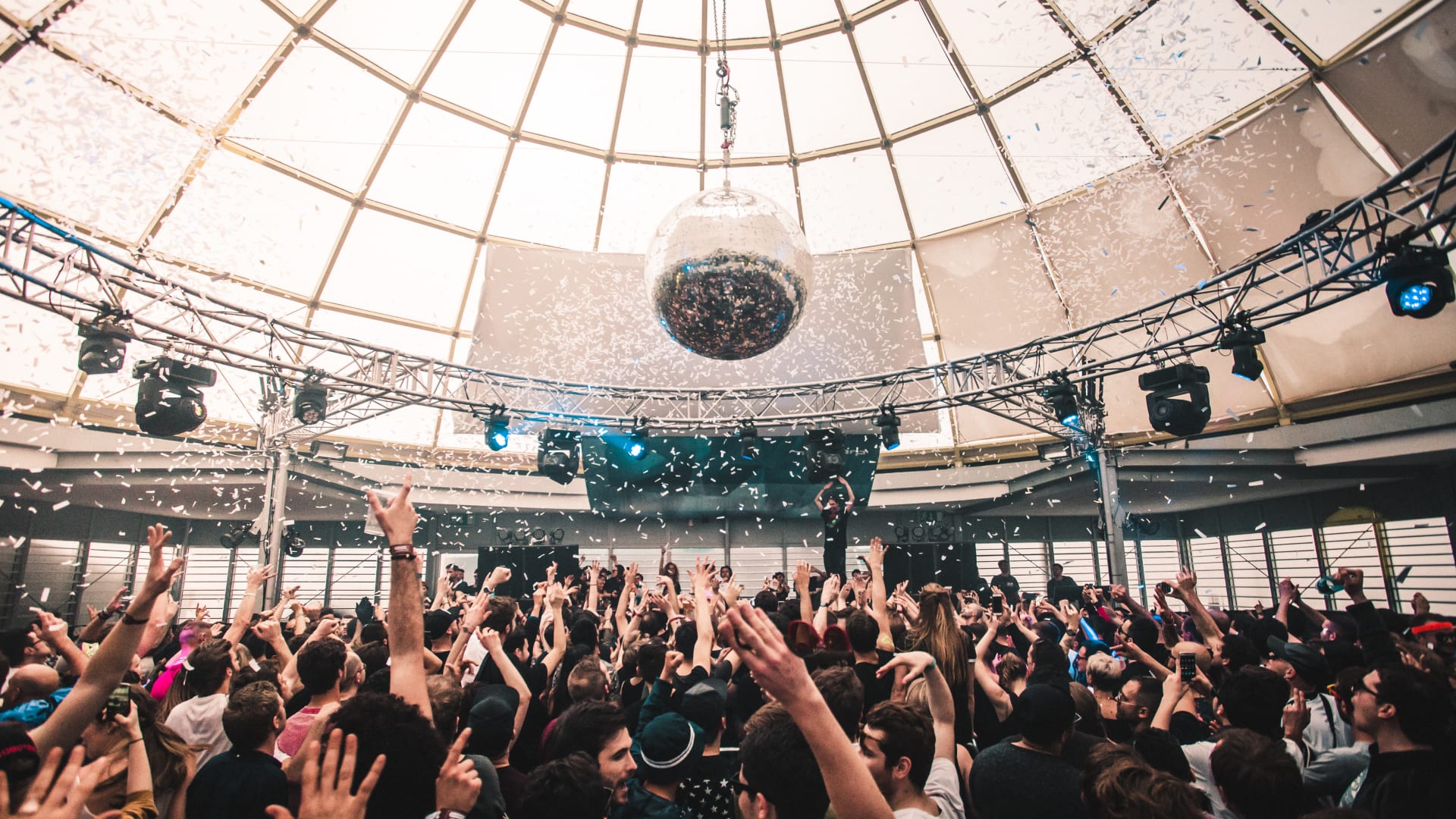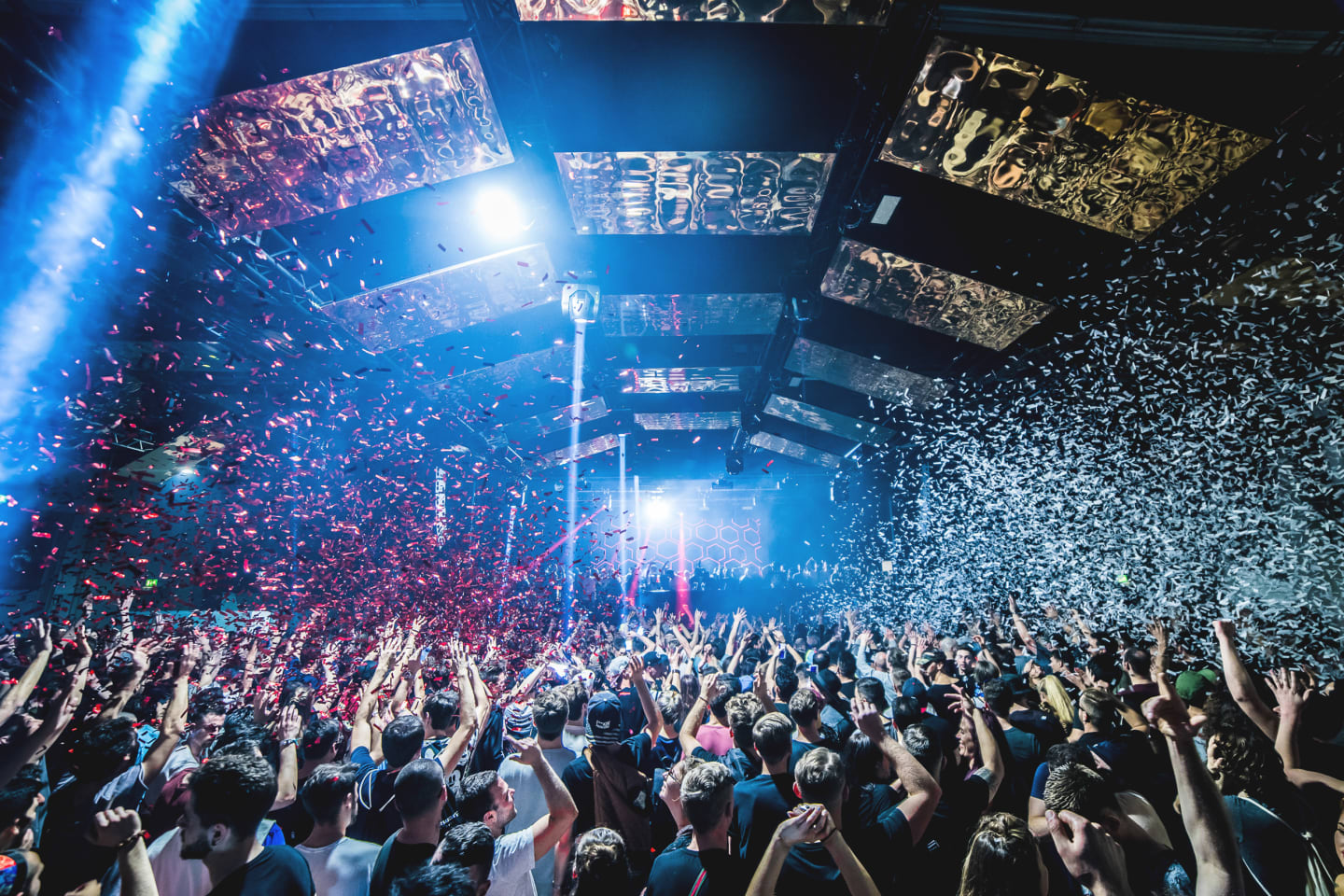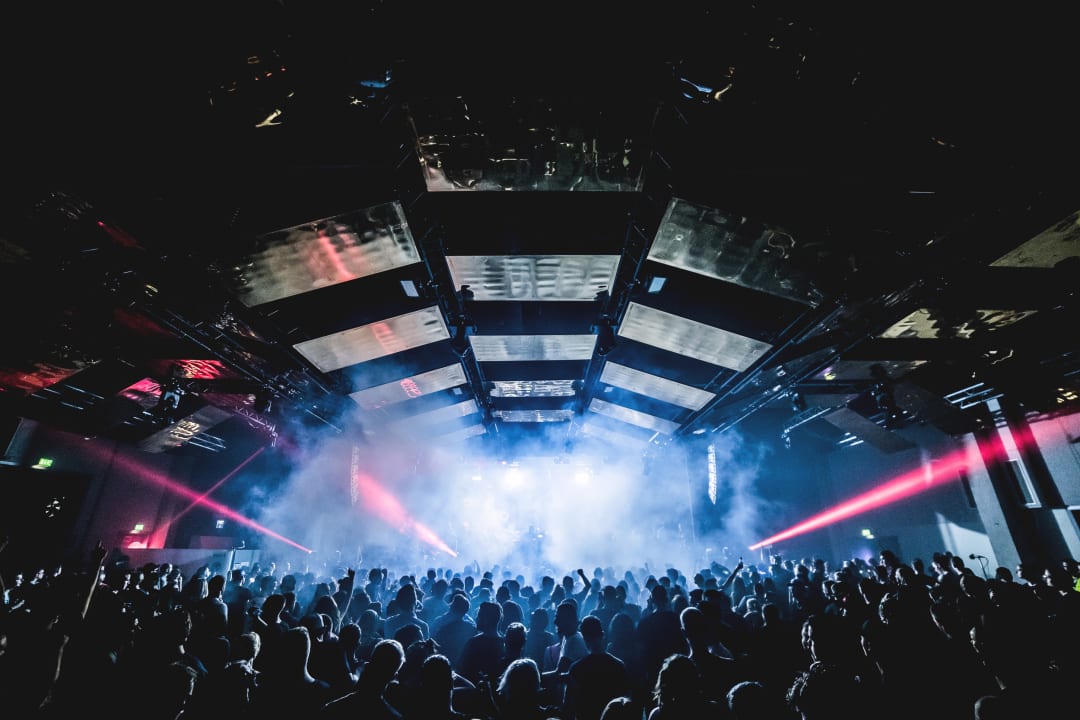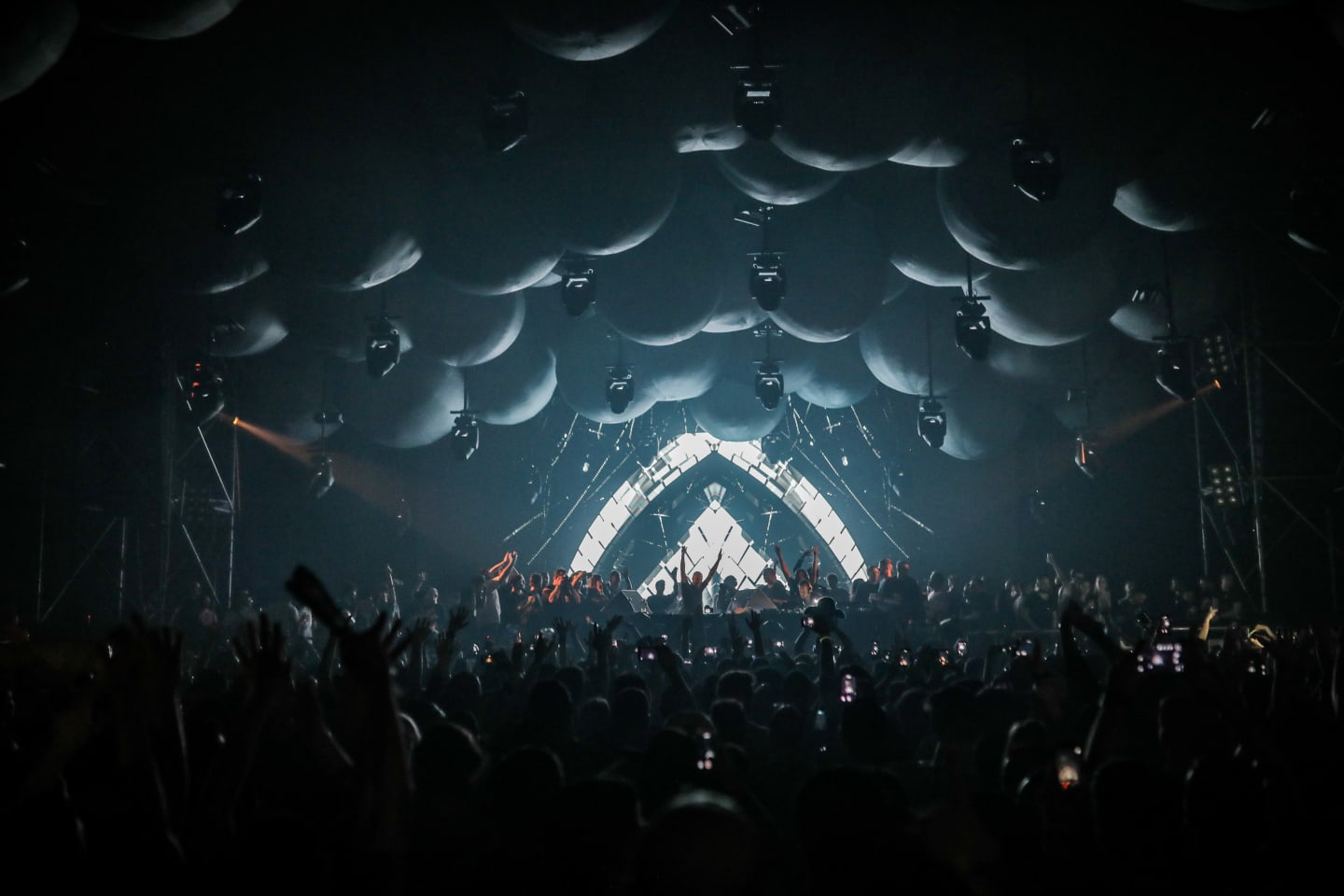
25 Years Of Raving: How Time Warp Became Germany’s Most Important Indoor Techno Festival
We look back on 25 years of raving to find out how the iconic Time Warp festival has become such a fixture of the German scene.
On April 6, Time Warp, one of Europe’s biggest indoor events for house and techno will celebrate its 25th anniversary. As we all know, nightlife years are like dog years. They feel longer, the wear-and-tear is more intense and whoever made it this far has definitely made it into rave culture’s storied, but still comparatively short, history books. Most likely they’ve also outlived most of their initial competition.
For a quarter of a century, the annual Mannheim-based festival has brought a growing lineup of underground A-list DJs and live acts to the mid-sized town in Baden-Wurttemberg. During that time, Time Warp’s organizers have seen the scene grow rapidly, drift back into relative obscurity in the early 2000s and finally begin to bounce back on a global scale a couple of years ago. Techno, for better or worse, has become a multi-million-dollar industry. Time Warp is bigger and more renowned than ever.
Time Warp’s story began in 1993 in Steffen Charles‘s record shop in Mannheim. To promote his shop, he started to organize club nights in local spaces, predominantly with international guests. Some of them, like Laurent Garnier, Sven Väth and Carl Cox, would eventually help to form the foundation of Time Warp in the years that followed. But then, the hype around the new music called techno was just gathering traction in Germany for the first time.
“Until 1992, the scene was really underground. But by 1993, things started to explode,” remembers Charles. “Suddenly there were raves everywhere, which were often organized by people who didn’t have much connection to the scene. Here in the Rhine-Neckar region, it seemed as if every car dealership was cleared out for a rave and every unused warehouse-like building was turned into a short-term location. It was pretty mad.” In 1994, the Love Parade exceeded 100,000 people for the first time. By 1995, its attendance was at 500,000. The popularity of techno accelerated.

At the height of this first big commercial techno frenzy, Charles partnered up with Michael Hock, who he met at his record shop in 1994 and who had experience in setting up bigger events. To counterweight the goldrush of techno becoming a new pop phenomenon, the pair wanted to create a rave that was true to techno’s underground roots, featuring the best international underground DJs and live acts, state-of-the-art sound and visionary design in a location that felt more like a big club than a massive rave.
“To be honest, when I heard about their plans my first reaction was a bit reluctant,” says Sebastian Dresel, a.k.a. Seebase, who was a resident DJ at Mannheim’s legendary club Milk! at the time—and who’s played every Time Warp since day one. “We had a strong local scene back then with amazing local DJ talent and all the confidence that comes with it. Importing big-name DJs was eyed skeptical because of that,” Dreesel explains. “Having said that, I was still very happy to be part of it and see it evolve over the years. It turned out to be a real gift for the region and Mannheim in particular.”
The first few years were as euphoric as they were financially and geographically unstable. The festival had yet to find a consistent location and moved around nomadically in the greater Mannheim region, throwing some additional editions throughout Germany. Charles’ record shop and the local club events he was still organizing throughout the rest of the year cross-financed Time Warp in its early stages. Despite all the challenges, the festival developed a name for itself far beyond Germany. Usually held at the beginning of spring, it became the first big event of the year for ravers and artists alike. Or, as Laurent Garnier put it in the book Time Warp published in conjunction with its 20th anniversary, “For me, it’s the only festival where two or three months before, you’ll see all of the DJs you know and say, ‘Hey, see you at Time Warp!’ It’s like a date written in the calendar with a big marker pen.“


Looking at the unique and revered status Time Warp has now, it’s easy to forget that there were quite a few bumps in the road to success along the way. After techno and house vanished off of the wider public’s radar in the early 2000s, the festival’s future became unclear for a number of years. What made matters worse was the pressure coming from the local police who raided the festival in a massive operation in 2002 and 2003. “We had a couple of years where the repression felt particularly intense,” remembers Robin Ebinger, who joined the Time Warp team in the late ‘90s and eventually founded Cosmopop GmbH with Charles in 2003. The joint company has since organized Time Warp and its international editions across Europe and the USA as well as other festivals like Love Family Park and Connect, the new cooperation with Awakenings.
The number of sold tickets dropped from 18,000 to 9,000 between 2001 and 2003. Fittingly, Time Warp’s 10th anniversary was themed “The big finale.” “We didn’t know what would happen with the festival. At that point, its future was pretty much up in the air,” says Ebinger. Luckily, attendance rose again, and from 2008 onward the festival managed to sell out every year. The city of Mannheim—and its then-mayor Dr. Peter Kurz—started to acknowledge Time Warp’s promotional and economic impact on the self-proclaimed city of “music and pop.”
“Most politicians have realized by now that they are dealing with an internationally lauded event. They may not really understand what it is, but it’s clear that we are playing in the Champions League with it,” says Ebinger. “Among the conservative circles there are still voices that aren’t exactly in favor of us, but they are the minority,” Charles chimes in. And Dresel, who between 2007 and 2015 worked as the city’s official pop representative, which included mediating between the city’s administration and the festival, adds: “Time Warp is definitely something special for Mannheim and for the city’s reputation as a hub for creative industries. It’s something for officials to pose with. But the impact is also felt on a more immediate level: in a mid-size city like Mannheim, you can’t overlook an event of this size. All those ravers from all over the world are simply dominating the cityscape during the weekend of the festival. It’s beautiful.”

In a time where most festivals attempt to be as musically as diverse as possible, Time Warp has stuck to their booking policy. Instead of feverishly looking for the hottest new DJs and fringe sounds, Time Warp has grown with its artists. What might feel conservative to some is a reflection of Charles’ and Ebingers’ musical tastes as well as friendships and close business partnerships that have developed over time.
DJs like Sven Väth, Laurent Garnier, Carl Cox, Richie Hawtin, Ricardo Villalobos, Chris Liebing, Nina Kraviz, Monika Kruse, Loco Dice, Magda and Luciano are integral parts of the annual Time Warp experience. This consistency is one reason why Time Warp feels like a class reunion every year, or “a family gathering,” as Sven Väth puts it, where the performing DJs stay long after they finished their sets to check out and party with friends and colleagues. “I really like festivals like Dekmantel or Dimensions with their eclectic bookings. But that’s not what we are about. We don’t need to be ahead of the curve necessarily. We are very focused with our bookings. We know our audience and we know where our strengths are. At the same time, it’s also important to us to introduce a couple of new faces with every event and mix it up a little, like Amelie Lens, Charlotte de Witte or Helena Hauff, who will play this year.”
Another key element to Time Warp’s success is the festival’s high production value and its dedication to creating immersive visual experiences on all six dance floors (this year they will add a seventh for the first time). It might be a costly investment, but ultimately it pays out and gives the festival a widely recognized, highly professional edge. “We develop new designs every year,” explains Anatol Fried, who’s been the technical director for the Mannheim event since 2011. “It’s an exciting process, turning those big rooms at Maimarkthalle into these playgrounds of video, light and architecture again and again.”
25 years after Time Warp started as a reaction to the influx of commercial raves, Charles, Ebinger and crew have stuck to their original ethos and philosophy of bringing some of the best DJs and live-acts techno and house have to offer to Mannheim. In doing so they managed to develop Time Warp into one of the biggest brands in the heated annual festival circuit. So when the lights turn off on April 6 it means once again: the truth is on the dance floor.
For more information on this year’s festival, which happens this Saturday, visit the Time Warp website here.
Published April 03, 2019. Words by EB Team.
